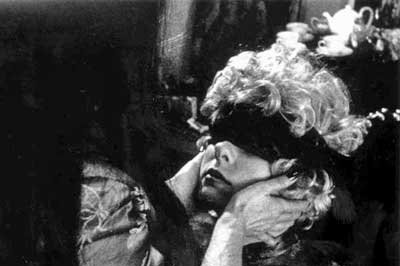Movie lovers nursing a hangover since the close of QFest should perk up with the news that International House Philadelphia is presenting a free evening of challenging cinema billed as “Fight Repression of Erotic Expression,” or “F. R.E.E.”
“F.R.E.E.” — 7 p.m. July 31 at International House, 3701 Chestnut St. — features six avant-garde and underground films focusing on the body, gender and sexuality. The screening will be followed by a panel discussion with four artists, including A.K. Burns and A.L. Steiner.
Although not limited to LGBT artists and themes, the program contains much that will interest LGBT viewers. Among the movies being shown is “Song of the Godbody,” a 1977 celebration of the male body by James Broughton, an openly gay filmmaker and poet. In this 10-minute piece, Broughton’s body is explored in intimate detail by his lover, Joel Singer, who shoots Broughton in extreme close-up.
Also noteworthy is panelist Barbara Hammer. Her 1974 movie “Dyketactics” was one of the first movies to unapologetically depict women loving women. The film is tender and explicit, while avoiding the clichés of pornography.
In addition to those highlights, the entire program will offer surprises and provocations. The films were chosen by M.M. Serra, the director of New York City’s Film-Makers’ Cooperative. Her selections fall far outside the mainstream, eschewing linear narrative and emphasizing the materiality of both human bodies and of film itself. Although the films feature plenty of nudity and sexual acts, their overall tone is transgressive, not pornographic.
“What I wanted to do is put together a survey of what I thought were significant, experimental films that explore sexuality and the poetics of cinema, but also ones where the filmmaker invested something that’s personal about themselves and who they are,” Serra said.
That broad vision enabled Serra to include films as disparate as Kurt Kren’s 1967 movie “September 20” and Peggy Ahwesh’s 1994 work “The Color of Love.” Kren’s short piece is almost too personal, focusing on the most corporeal bodily functions: eating and eliminating waste. Serra describes the film as anti-aesthetic and anti-erotic, but she points out that it transcends mere scatology.
“It’s about what unifies all of us,” Serra said. “This film is about eating, drinking, pissing and shitting, and it reduces what it is to be human to, basically, what we all have in common, no matter how much money you have or what class you are.”
In contrast, “The Color of Love” draws attention to materiality of a different sort. Working with an old stag reel, Ahwesh incorporates the actual decay of the original movie into her re-imagining of standard porn scenarios. Images appear momentarily, only to fragment into colorful shards or dissolve into amorphous blobs. The effect is beautiful; Serra likens the film to a stained-glass window.
Other films invite viewers to glimpse sexual behavior or fantasies they might not otherwise have considered. Tom Chomont’s 1984 “Razor Head” depicts gay male S&M. In showing audiences a top shaving his lover, viewers become part of the scene and an intimate moment is transformed into a ritualized performance.
But even when a film is overtly sexual, as Chomont’s is, Serra hopes that the audience will look beyond the behavior portrayed and the individuals involved to ask what the movie says about the portrayal of sexuality on film in general.
“It could be their sexual fantasies or an expression of a dream quality, because cinema is a representation,” Serra said. “It’s how you make the phantasmagorical into a visible reality.”
The single quality uniting the work in “F.R.E.E.” is revelation. Serra shares a bit of herself in “Darling International,” a noirish take on female fantasy. Made in strict collaboration with Jennifer Reeves, this 1999 film conflates the mystery and pull of women’s sexuality with the dark, gritty aspects of a vanished New York.
Finally, there is James Franco’s video, “The Feast of Stephen,” which he made in 2009 while a student at NYU. Fans who only know the Hollywood star as the stoner dude in Judd Apatow movies will be surprised. This short work touches on boys, basketball and being caught looking. Serra also described it as brave for its unabashed exploration of homoeroticism.
Viewers whose curiosity is piqued by “F.R.E.E.” are in luck. Jesse Pires, program curator at International House, hopes the evening will prime audiences for an upcoming film series called “Free to Love: The Cinema of the Sexual Revolution,” to begin in January.
“It’s a great way to start the conversation,” Pires said regarding “F.R.E.E.” “I don’t want to limit it to just the films; I really want to have this conversation as a broad discussion about different ideas: poetry, pornography, beauty and how they are reflected in film and art.”
For more information, visit ihousephilly.org.
